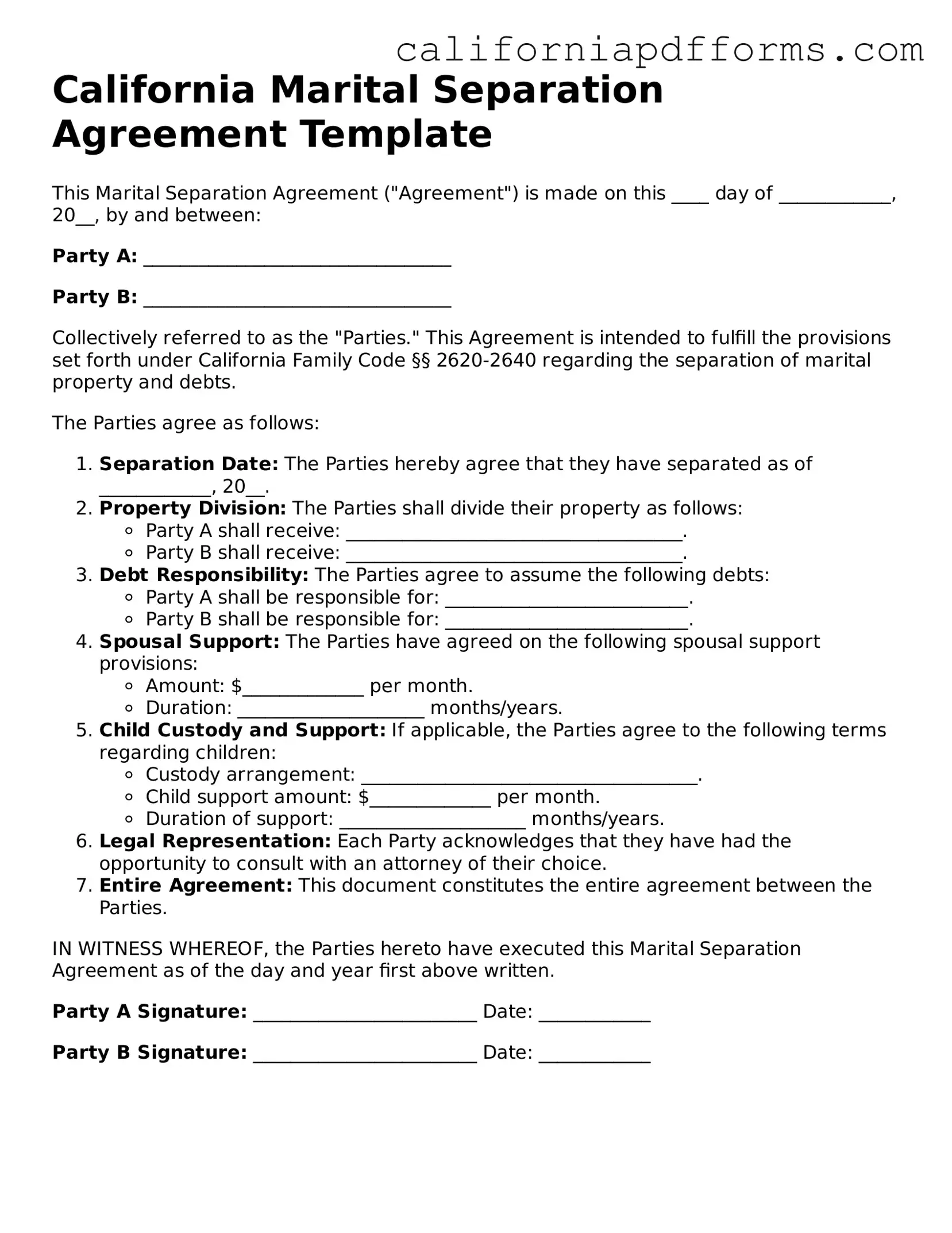Official Marital Separation Agreement Template for the State of California
A California Marital Separation Agreement form is a legal document that outlines the terms and conditions agreed upon by spouses who wish to live separately while remaining legally married. This agreement can address various issues, including property division, child custody, and support arrangements. If you're considering a separation, it's important to have a clear understanding of your rights and responsibilities, so take the first step by filling out the form below.
Click the button below to get started!
Open Your Form Online
